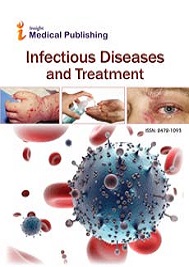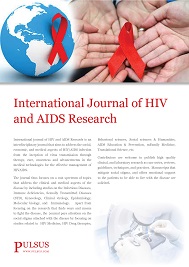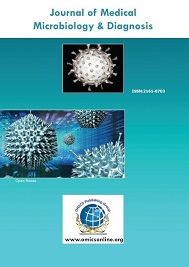Theme: Innovating novel technologies and therapeutics towards Infectious Diseases
Infectious Diseases Conference 2020
Infectious diseases are ultimately caused by microscopic organisms like bacteria, viruses, fungi or parasites where Microbiology is the investigation of these minute life forms. A large number of living beings live in and on our bodies yet under specific conditions, a few creatures may cause infection these can be transmitted from individual to individual. Microbiology likewise remembers basic research for the field of numerous branches like cell biology, physiology, biochemistry, Evolution, biology and clinical view of microorganisms, including how the host reacts to these infections.
The Infectious Diseases Conference 2020 welcomes all the participants from all over the world to attend the grand conference "Annual meeting on Infectious Diseases, Microbiology & Beneficial Microbes" on October 12-13, 2020 at Zagreb, Croatia which incorporates brief keynote introductions, oral talks, blurb introductions and presentations. Teachers, Researchers around the world will grandstand their examination work and will illuminate the way wherein Men, Women and Children of all socioeconomics can be restored of various Infectious Diseases.
As the topic says the recognition behind this meeting is to mindful individuals about the 3C's which are Cause, Complications and Cure of Diseases. The overall passings because of just Infectious Diseases are as per the following:
- HIV/AIDS (1 million)
- Respiratory Infections (4.4 million)
- Diarrhea (3.1 million)
- Hepatitis b (1.1million)
- Tetanus (500,000)
- Measles (1 million)
- Malaria (2.1million)
- Tuberculosis (3.1 million)
As we realize that these are the name rundown of the unmistakable ailments just, there are a few different ailments which will be likely explanations of more passings, if not taken consideration at a beginning period.
Why To Attend?
Infectious Diseases gathering incorporates two days of introduction on techniques and systems which are identified with Control and Prevention of Infectious Diseases just as to investigate new developments and ideas on a worldwide scale. It's a chance to cooperate with the conspicuous personalities in the field of Infectious Diseases and learn.
This gathering will consolidate the feature of momentum advancements in the field of Medical Science in its battle against wellbeing perils. The intelligent sessions with the comprehensively acclaimed speakers will likewise be advantageous for the scholarly understudies from the field of Medical Science to expand their insight in the individual field.
Target Audience:
Infectious Diseases Conference 2020 is anticipating members from shifted statistic medicinal fields.
- Pathologist of Infectious Diseases
- Irresistible Diseases Specialists
- Human services Professionals
- Professors
- Pediatricians
- Microbiologists
- Scientists
- Restorative Students
- Delegates from Pharmacists organizations
- Chiefs/Co-Directors of Research based organizations over the globe
Track 1: Bacterial Infectious Diseases:
Bacteria are single-celled microorganisms also known as prokaryotes. There are estimated to be at least none nonillion bacteria on our planet. A nonillion means one followed by 30 zeros. Much of Earth's biomass is made up of bacteria only.
Bacteria can survive in almost any kind of environment, from extreme heat conditions to intense cold, and some can even survive in radioactive waste.
Some of the Diseases are:
- Cholera
- Diphtheria
- Dysentery
- Bubonic Plague
- Pneumonia
- Tuberculosis
- Typhoid
- Typhus
Here are some examples of bacterial infections:
- Bacterial meningitis
- Otitis media
- Pneumonia
- Tuberculosis
- Upper Respiratory Tract Infection
- Gastritis
- Food Poisoning
- Eye Infections
- Sinusitis
- Urinary Tract Infections
- Skin Infections
- Sexually Transmitted Diseases
The most common Infections are Viral Infections, Bacterial Infections and Fungal Infections.
2nd International Conference on Medical and Molecular Pathology-February 12-13, 2020 | Paris, France; 2nd International Conference on Breast Pathology and Cancer Diagnosis-September 17-18, 2020 | Vienna, Austria; 7th International Conference on Infectious Diseases, Bacteriology and Antibiotics-October 12-13, 2020 | Prague, Czech Republic; 7th International Conference on Parasitology, Microbiology & Infection Control, November 16-17, 2020 | Lisbon, Portugal; 18th European Pathology and Medicine Congress-April 29-30, 2020 | Prague, Czech Republic;
Track 2: Viral Infectious Diseases:
Viral infections are caused by a virus that transmits in our body. Millions of types of virus are estimated to exist, but only 5,000 types of them have been identified. Viruses contain a small piece of genetic code and they are protected by a coat of protein and fat.
- The common cold is mainly caused due to rhinovirus, coronavirus and Adenovirus viruses
- Encephalitis and Meningitis are caused due to Entero-viruses and herpes viruses
- Warts and skin infections are caused due to Human Papilloma Virus (HPV) and Herpes Simplex Virus (HSV).
- Gastroenteritis by the Nova Virus
Other viral conditions are:
- Zika virus
- Human Immunodeficiency Virus (HIV)
- Hepatitis C
- Polio
- Influenza
- Dengue Fever
- H1N1 swine flu
- Ebola
- Middle East respiratory syndrome (MERS-CoV)
Track 3: Fungal Infectious Diseases
Fungus is a multi-cellular parasite which can decompose and then absorb organic matter using enzymes. There are approximately 51 million kinds of fungus present on earth.
Many fungal infections appear on the upper layers of the skin, and some progress to the deeper layers as well. Inhaling fungal spores can also lead to systemic fungal infections, such as thrush, or candidiasis.
Individuals with a higher risk of developing a fungal infection, includes people who:
- Use antibiotics for a long time.
- Having a weak Immune system , for example: HIV or AIDS, Diabetes, Chemotherapy Treatment, and those who have undergone organ transplantation, as they take medications to prevent their body from rejecting the new organ transplanted.
Examples of fungal infections are:
- Valley fever or Coccidioidomycosis
- Athlete's Foot
- ringworm
- some eye infections
Prevention
We cannot prevent all Infectious diseases from getting in our body, but the following steps can reduce the risk of transmission:
- We should always wash our hands before and after having food,
- Always clean surface areas and don’t leave room-temperature food exposed when cooking.
- Always take recommended vaccinations and be updates regarding the same.
- Take antibiotics when prescribed, and complete the recommended course even if symptoms improve earlier than anticipated.
- Practice of safe sex by getting STD checks from time to time, use of condoms, or abstaining altogether.
- Avoid sharing items such toothbrushes, combs, razorblades, drinking glasses and kitchen utensils.
- Follow doctor's advice about traveling or working while you are ill, as you could infect others as well.
Track 4: Protozoan Infectious Diseases
Parasitic micro-organisms also known as Protozoa that cause tropical diseases for example amoebic dysentery, Trypanosomiasis(sleeping sickness), Trichomoniasis, Giardiasis, Leischmaniasis and Toxoplasmosis.
Medicines used for kill protozoa (Parasitic micro-organisms) are used to treat these types of infections. Doctor will do various tests in order to identify the protozoa and choose the appropriate antiprotozoal.
- Daraprim (pyrimethamine)
- Diloxanide
- Fasigyn (tinidazole)
- Flagyl tablets (metronidazole)
- Mepacrine
- Metronidazole tablets and suspension
- Norzol suspension (metronidazole)
- Pentacarinat injection
- Pentostam (sodium stibogluconate)
- Wellvone (atovaquone)
Track 5: Pediatric Infectious Diseases
The infectious disease found in infant baby is termed as Pediatric infectious diseases. If a child has indefatigable disease because he was affected by infectious agent, a pediatric infectious diseases specialist has the experience and qualifications to help pediatrician diagnose and treat the child in a correct way. The pediatric infectious diseases specialist provides treatment to children from birth till their teen years.
Track 6: Infectious Diseases and Cancer
Infections may result raising the risk of cancer in different ways. Some of the viruses directly affect the genes inside cells that regulate their growth. These viruses can penetrate their own genes into the cell, causing the cell to grow enormously. These infections may lead in long-term inflammation in a part of the body. This results to changes in the affected cells, which can eventually lead to occurrence of cancer.
Some of infections can suppress or decrease a person’s immune system, which normally helps to protect the body from foreign elements and thus increasing the chance of cancer.
The risk of developing cancer is also influenced by other factors such as, infection with Helicobacter pylori (H pylori) bacteria can increase your risk of stomach cancer, but what you eat, whether or not you smoke, and other factors also comes under account.
Track 7: Veterinary Infectious Diseases
These are infectious diseases found in animals. Safety and quality are major concern of cattle industry as to provide food for the growing population around the globe. However, the cattle industry’s efficiency is far more from optimum. Infectious diseases in animals may lead to their tremendous suffering and moreover, crippling economic dropping to the people who rely on these animals for their livelihoods.
Even more than 60% of all infectious diseases of animals can also affect human beings. These types of infection are called "zoonotic infections" example: Avian Influenza. Few other diseases are like Rabies, West Nile Virus, Hantavirus, Bovine Spongiform Encephalitis also known as ("Mad Cow Disease"), Lyme disease and etc.
Track 8: Infectious Diseases Tests
The test is led by presenting symptoms in individual with an infectious disease, but it always needs extra diagnostics ways in order to confirm it. Some symptoms are indicative of particular diseases and are called pathognomonic signs.
Microscopy is another primary tool in the diagnosis of infectious disease. Virtually all the culture techniques rely on microscopic test for definitive confirmation of the infectious agent. Microscopy may be carried out with simple instruments, such as the compound light microscope, or with an electron microscope. Samples obtained from patients are viewed under the light microscope, and often lead to identification. Microscopy can be made exquisitely specific when used in combination with antibody centred techniques.
Track 9: Antigen- Antibody reactions
Antigen–antibody reaction mainly focuses on the rapid detection of proteins. Antibodies recognize specific proteins based on their structure and content, and can be very specific, binding to only a small part of an antigen (known as the epitope), and discriminating between highly similar epitopes. When a host is exposed to an antigen than the host will develop an array of antibodies so that each binds to a separate epitope of the antigen. These antibodies will vary in specificity.
Many proteolytic enzymes known to enhance the antigen-antibody reactions, but the most prominently used are papain, ficin and bromelin.
Track 10: Host and Microbial Genetics
In microorganisms, several kinds of recombination are known to take place. The most common form of them is general recombination, which involves the reciprocal exchange of DNA between a pair of DNA sequences. Its takes place everywhere in the microbial chromosome and is represented by the exchanges taking place in bacterial transformation, bacterial recombination, and its transduction.
Track 11: Prevention of Infectious Diseases
Prevent infection before it begins and avoid spreading the infection to others by these easy steps:
- Wash your hands well with soap. Dry your hands thoroughly.
- Cover your mouth and nose with a cloth when you sneeze, then dispose it. If no nothing is handy, cough or sneeze into your elbow rather than into your hands.
- Wash and bandage all cuts. Any serious cut or animal or human bite should be treated by a doctor.
- Do not prick at healing wounds or squeeze pimples this makes the infection to increase rapidly.
- Don't share dishes, glasses or eating utensils with others.
Track 12: Infection Control and Public Awareness
Over the last 20 years, increasing emphasis has been placed on health communication strategies that are collaboratively designed, implemented, and evaluated. Eventually, various successful strategic health campaigns have been developed, particularly in the Human Immunodeficiency Virus/acquired immune deficiency syndrome arena.
We need to be critically aware of these issues while communicating with patients and their caregivers, select health issues that is appropriate to the client's level of understanding, and provide a systematic approach by utilizing varied mechanisms (e.g., printed material, displays, videos, and discussions) to educate and increase awareness in and stress motivating principles, cultural relevance, and feasibility.
Track 13: Advancements in Vaccines and Therapeutics
Conventionally, stabilization of prophylactic vaccines has been a main attraction for the scientific and research communities. International health care organizations have provided funds for this effort for more than forty years. Moreover, stability has been linked with the temperature surrounding the vaccine vial, with not much attention being paid towards coinciding environmental parameters.
Recently, the advantages of the Electronic Time-Temperature Indicator [ETTI] have been well described. In all probability ETTI would not be proficient enough at monitoring the evaporative and radioactive transfer of heat from the atmosphere. Monitoring temperature without a simultaneous estimate of humidity is often very erratic.
Track 14: Sexually Transmitted Diseases/ Sexually Transmitted Infections
Sexually transmitted diseases/ sexually transmitted infections are the infectious diseases which are transmitted through sexual contact with an infected individual and also transmitted during vaginal or other types of sexual intercourse including oral and anal sex.
Examples of sexually transmitted diseases include:
- Hepatitis B
- Crabs(pubic lice)
- human immunodeficiency virus and acquired immunodeficiency syndrome (HIV and AIDS)chlamydia
- Cancroid
- Genital Herpes
- Genital Warts
- Human Papilloma Virus (HPV)
- Trichomoniasis (parasitic infection)
- Molluscum Contagiosum
- Pelvic Inflammatory Disease (PID)
- Syphilis, Gonorrhea
Track 15: Epidemiology & Diagnosis of Re-Emerging Infectious Diseases
Epidemiology studies the patterns, causes and effects of health issues. It is the cornerstone of public health and informs policy decisions and evidence based practice by identifying risk factors for disease and targets for preventive healthcare. Epidemiologists help with study design, data collection, interpretation, statistical analysis of data, and dissemination. Epidemiology helped to develop methodology used in clinical research, public health studies and to a lesser extent basic research in the biological sciences.
Subtrack: Diagnosis of Infectious Diseases
Medical diagnosis is the process of treatment which is helpful in determining which disease or condition explains a person's symptoms and signs. Laboratory tests may identify organisms directly (e.g., visually, using a microscope growing the organism in culture) or indirectly (e.g., identifying antibodies to the organism). General types of tests includes culture, microscopy and immunologic tests (agglutination tests such as latex agglutination, enzyme immunoassays, western blot, precipitation tests and complement fixation tests) and nucleic acid/ non nucleic acid based identification techniques. Sub types of diagnoses include clinical, laboratory, radiology, principal and admitting diagnosis. Advanced methods have been approached to diagnose the infection in any part of the body. Examples include biomarkers/ elisa test/ chest x ray/ skin biopsy/ tympanometry and Tympanocentesis.
Track 16:
Global Trends in Emerging Infectious Diseases-Antibiotics
An Infectious disease occurrence has increased rapidly in the past few decades or threatens to increase is termed as emerging. These diseases include new infections, previously unrecognized infections and old infections reappearing due to antimicrobial resistance, public health issues and unhygienic conditions.
Antimicrobials/Antibiotics/Antibacterials are used in the treatment and prevention of bacterial infections. They might either kill or inhibit the growth of bacteria. Few antibiotics have antiprotozoal activity. Antibiotics are not effective against viruses such as the common cold or influenza and their inappropriate use allows the emergence of resistant organisms.
SubTrack: Immunology of Infections
Immunology of infections is nothing but the battle between pathogens and the host immune defenses. Immunology is the branch of science centered with the various aspects related to immune system, innate and acquired immunity. Immunology also focuses on dealing with laboratory techniques involving the interaction of antigens with specific antibodies.
Track 17: Plant Disease Modeling and Parameter Estimation
Plant pathology is the study of diseases found in plants caused by pathogens and environmental conditions. Organisms that are the source of infectious diseases includes fungi, oomycetes, bacteria, viruses, viroids, virus like organisms, phytoplasmas, protozoa, nematodes and parasitic plants. Plant pathology includes the study of pathogen recognition, etiology, disease cycles, economic impact, plant disease epidemiology, plant disease resistance. Here we also get to know that how plants diseases can affect humans and how can we prevent human being of all demographics to get affected by these.
Infectious Diseases Therapeutic Market
The infectious diseases therapeutic market in US is estimated to grow at a rate of 3.37% between 2014- 2019. As per the records, 25% of deaths are mainly due to infectious diseases globally. Current market trend shows that North America has the more global market for infectious diseases therapeutics due to increasing incidence of infectious diseases and due to rise in aging population. Followed by North America highest global market is expected in Asia then followed by the Europe in the global infectious diseases therapeutics market. In Asia-Pacific region, China and India are expected to be the fastest growing infectious diseases therapeutics markets. The main reasons behind the highest global market of infectious diseases therapeutics market in the above countries is mainly due to large number of patients and due to increase in government funding. Some of the major companies playing a key role in the global infectious diseases therapeutics market are Merck & Co., Pfizer, Johnson & Johnson, F. Hoffmann-La Roche, GlaxoSmithKline Pharmaceutical, Inc., Auritec Pharmaceuticals, Novartis, Achillion Pharmaceuticals, Isis Pharmaceuticals and Gilead Sciences.
Infectious Diseases Diagnostics Market
Market for infectious disease molecular diagnostics tests includes hospitals, blood banks, reference laboratories. North America has the highest global market for molecular diagnostics tests followed by Europe due to the market availability of the tests and high occurrence rate of various infectious diseases such as HPV, hepatitis and bacterial infections. Asia Pacific, Latin America and Middle East are expected to be the potential markets in the coming years. Major companies which play a key role in infectious disease molecular diagnostics tests market are Abbott Laboratories, Affymetrix, Inc., Becton, Dickinson and Company, bioMérieux, Cepheid, Inc., Hologic, Inc., Life Technologies, Myriad Genetics, Inc., Qiagen N.V. and others.
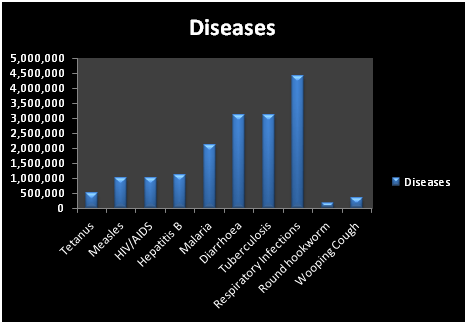
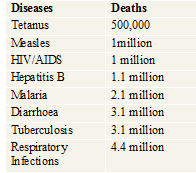
Conference Highlights
- Bacterial Infectious Diseases
- Viral Infectious Diseases
- Fungal Infectious Diseases
- Protozoan Infectious Diseases
- Pediatric Infectious Diseases
- Infectious Diseases and Cancer
- Veterinary Infectious Diseases
- Infectious Diseases Tests
- Antigen- Antibody reactions
- Host and Microbial Genetics
- Prevention of Infectious Diseases
- Infection Control and Public Awareness
- Advancements in Vaccines and Therapeutics
- Sexually Transmitted Diseases/ Sexually Transmitted Infections
- Epidemiology & Diagnosis of Re-Emerging Infectious Diseases
- Global Trends in Emerging Infectious Diseases-Antibiotics
- Plant Disease Modeling and Parameter Estimation
To share your views and research, please click here to register for the Conference.
To Collaborate Scientific Professionals around the World
| Conference Date | October 12-13, 2020 | ||
| Sponsors & Exhibitors |
|
||
| Speaker Opportunity Closed | Day 1 | ||
| Poster Opportunity Closed | Click Here to View | ||
Useful Links
Special Issues
All accepted abstracts will be published in respective Our International Journals.
- Journal of Infectious Diseases and Treatment
- Journal of Medical Microbiology & Diagnosis
- Journal of AIDS & Clinical Research
Abstracts will be provided with Digital Object Identifier by









